
Dr. Seuss' story "Horton Hears a Who" is used in this lesson to prompt a discussion about communities and cooperation.
- Subject:
- Social Studies
- Material Type:
- Lesson
- Lesson Plan
- Author:
- Utah Lesson Plans
- Date Added:
- 01/10/2023

Dr. Seuss' story "Horton Hears a Who" is used in this lesson to prompt a discussion about communities and cooperation.
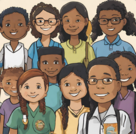
This is a lesson plan for 2nd grade students in Social Studies. Students will recognize and practice civic responsibility in the community and the nation. This lesson will take approximately 4 lesson periods of 1/2 hour each. This lesson plan is designed for face-to-face instruction.Image created by Tamara Baggett on Canva

This is an art lesson incorporating the Art element of Value with black and white photography. We are also incorporating Language arts & social studies standards as well. Preview image: "iPad" by Sean MacEntee is marked with CC BY 2.0.

This unit was created as an introductory/review unit for Algebra II to allow for a review of main concepts needed to progress in Algebra II. However, it could also be used in Algebra I to introduce for the first time real numbers; number operations; and equations, expressions, and inequalities.
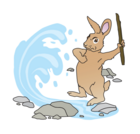
This lesson shares a Ute tale with students to help them to use illustrations to help clarify text details and sequence. The story is then used to help engage students in a discussion on bullying, how actions have consequences and what the characteristics are of a good friend.Background information gives teachers resources to help their students learn more about the Ute Indian Tribe of the Uintah and Ouray Reservation. The lesson is an integrated English Language Arts, Social Studies, Health lesson.
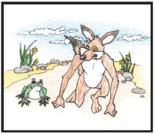
According to Goshute tradition, Coyote tales should only be told during the winter time. Please use this lesson and story in the winter months. This lesson utilizes the Confederated Tribes of the Goshute (CTGR) tale, “Coyote and Frog Race” to decode common words with suffixes. The students will also be introduced to why eagle feathers are significant in Native cultures and its similarity to present day ways of honoring those who accomplish great things. Students will also participate in cooperative activities to build teamwork in the classroom.Native peoples tell stories about Coyote and other animals to their children. Based on Coyote’s mistakes, the elders teach children about proper behavior and positive attitudes. The lessons taught help children to avoid making the same mistakes as Coyote and suffering the consequences in their own lives.

The National Archives provides primary source sets, educator resources and articles, and printable primary sources analysis sheets. This page on the site outlines how to analyze primary source documents. Document analysis is the first step in working with primary sources. Teach your students to think through primary source documents for contextual understanding and to extract information to make informed judgments.

Gilder Lehrman Institute of American History provides elementary lesson plans, student activity sheets and professional development for teachers centered on American History. This unit is focused on the US Constitution.

This lesson plan has second grade children create a digital story about their family cultural traditions.(Cover Photo found at https://pixabay.com/illustrations/people-group-kids-children-2127510/)
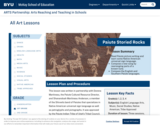
Read Paiute picture writing and learn some Native American universal sign language. Compose a new song by rearranging parts of a known tune. Compare the English and Southern Paiute languages.
This lesson was written in partnership with Dorena Martineau, the Paiute Cultural Resource Director, and Shanandoah Martineau Anderson, a member of the Shivwits band of Paiutes that specializes in Native American universal sign language as well as petroglyphs and pictographs. It was approved by the Paiute Indian Tribe of Utah’s Tribal Council. Before teaching this lesson, please explain to your students that there are many symbol Indigenous tribes in the United States and that this lesson specifically focuses on the Paiute Indian Tribe of Utah and does not represent other Native American groups. It is the hope of the Paiute Indian Tribe of Utah that other native tribes will respect their...
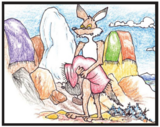
This lesson utilizes the experience-text-relationship method to enhance comprehension and prediction skills of the story "Coyote and the Rolling Stone," a traditional tale shared by the Confederated Tribes of the Goshute Reservation. It also helps students become familiar with cultural storytelling and its importance in Native cultures. Students will have a brief introduction to the Confederated Tribes of the Goshute Reservation and its location in Utah. The lesson includes an experience-eliciting discussion/activity, a discussion about the students' reading of the story, and a discussion relating students' experiences to the content of the story.

Activities and a game help students compare rural, suburban, and urban communities.